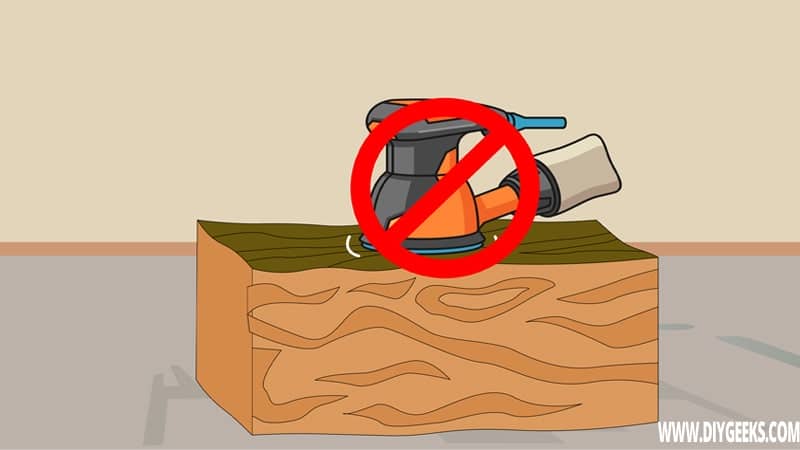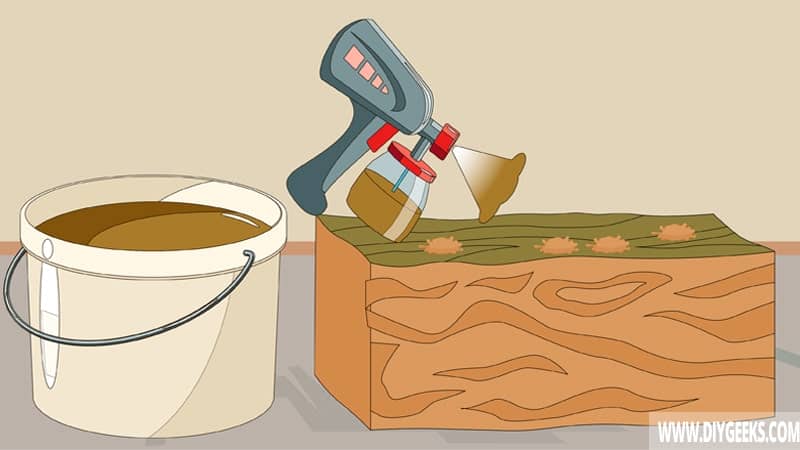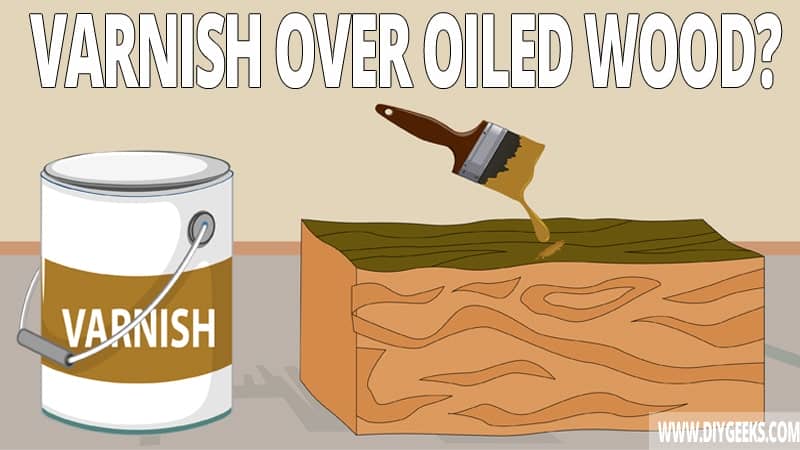Varnish is a sealer that protects surfaces from moisture, water, and scratches, while wood oil is a penetrating finish that enhances the wood color and adds protection. So, can you apply varnish over wood oils?
You can apply varnish over the wood oil finish, but the wood oil finish must cure (fully dry) first and you must clean and sand it before applying varnish.
Cleaning removes dust and dirt that prevent proper adhesion, while sanding removes imperfections and creates tiny pores (holes) that varnish can penetrate and adhere to.
Does Varnish Adhere Over Wood Oils?
Varnish does adhere over wood oils as the sealer is a topical finish and doesn’t need to penetrate a surface to adhere. But, you must clean and sand the wood oil finish before applying varnish.
Wood oils accumulate dust over time and have a glossy hard finish that can prevent proper adhesion. Clean the oiled wood finish with a clean rag to remove dust and sand the finish with fine-grit sandpaper (220-grit) to create tiny pores (holes) that improve the adhesion.
Oil-based varnish adheres over wood oil finish better as both finishes have high amounts of oils that are compatible.
Related Read: Varnish vs Wood Oil
Can You Apply Varnish Over Wood Oil Without Sanding?

You can apply varnish over wood oil without sanding but it won’t adhere properly. If you don’t lightly sand the wood oil finish, its glossy finish will prevent varnish from adhering properly
The purpose of sanding is to remove imperfections and bumps from the surface (or existing finish), and create tiny pores (holes) that varnish can penetrate and adhere to.
While varnish doesn’t need to penetrate a surface to adhere, sanding will still help the sealer adhere better and stronger.
How Long Must Wood Oils Dry Before Applying Varnish?
Wood oil must dry for around 3 to 5 days before applying varnish, depending on the type of wood oil. For instance, boiled Linseed oil must cure for around 3 days before sealing it.
Once a wood oil finish cures (fully dries) it reaches its maximum durability, adhesion, and protection.
If you seal a wood oil finish too soon, the finish will turn sticky, tacky, or may peel off. If the wood oil hasn’t dried yet, its solvent (oil) hasn’t evaporated from the coating yet and will prevent varnish from adhering or drying over it.
How To Varnish Over Wood Oil?
To varnish over wood oil, do the following things.
- Clean the Finish.
- Sand the Finish.
- Apply Varnish.
The tools you need for this project are listed below.
- Sandpaper
- Clean rags
- Paint scraper
- Paintbrush or spray gun
- Varnish
- Paint thinner (optional)
1. Clean The Finish

Clean the oiled wood finish to remove dust, dirt, or debris that prevent proper adhesion.
To clean an oiled finish, use warm soapy water and a clean cloth. Pour the soapy water over the finish and use a clean cloth to wipe the dust, dirt, or debris off.
2. Sand the Finish

Sand the oiled wood finish to remove imperfections and bumps, and create tiny pores (holes) that varnish can penetrate and adhere to.
To sand wood oil finish, use fine-grit sandpaper (220-grit). Fine-grit sandpaper will smoothen the finish but won’t remove it. Don’t use coarse-grit or medium-grit sandpaper as it will remove the finish.
3. Apply Varnish

Apply 1-2 thinned varnish coats over wood oil finish using a sprayer or roller. Wait until one coat dries before applying the next one. Water-based varnish takes around 6 hours to dry between coats, while oil-based varnish takes around 24 hours.
To thin water-based varnish, use water. To thin oil-based varnish, use mineral spirits or turpentine. The recommended thinning ratio of varnish is 3:1 (3 parts varnish to 1 part thinner).
Wait until the final varnish coat cures (fully dries) before cleaning or using the surface.
Which Types of Wood Oils Can You Apply Varnish Over?

- Danish Oil. You can apply varnish over Danish oil, but you must lightly sand the finish. Danish oil is a penetrating finish and will soak deep into the wood grain, preventing good adhesion.
- Linseed Oil. You can apply varnish over Linseed oil as both finishes are oil-based and compatible.
- Teak Oil. You can apply varnish over Teak oil, but you must sand the oiled wood with medium-grit sandpaper. Teak oil creates a hard glossy coating that prevents finishes from adhering over it without sanding.
- Tung Oil. You can apply varnish over Tung oil as both finishes are compatible.
- Osmo Oil. You can apply varnish over Osmo oil, but you must sand the wood oil finish first.
Related Read: Can You Stain Over Wood Oils?
Can You Mix Varnish With Wood Oils?
You can mix oil-based varnish with wood oils as both finishes use the same solvent (oil) and are compatible. A varnish and wood oil mixture will produce a tinted glossy moisture-resistant coating that protects the surfaces from moisture, water, scratches, and other damages.
You can’t mix water-based varnish with wood oils as both finishes have different solvents. Water-based varnish uses water as the solvent, while wood oils use oils as the solvent. Water and oils don’t mix.


